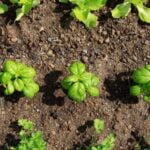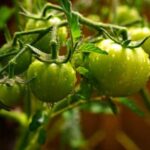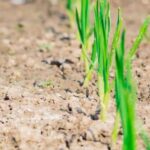When it comes to maintaining a flourishing vegetable garden, understanding the role of fertilizers is essential. In particular, the phosphate content in superphosphate fertilizers plays a crucial role in ensuring optimal plant growth and yield. But what exactly is the phosphate content in superphosphate fertilizers for vegetable gardens? In this article, we will delve into the importance of phosphate content, how it affects plant development, and the best practices for using superphosphate fertilizers to maximize their benefits.
Superphosphate fertilizers are a popular choice among gardeners due to their high phosphate content, which is vital for promoting root development, flower formation, and overall plant health. By comprehending the significance of phosphate in superphosphate fertilizers and its impact on vegetable gardens, gardeners can make informed decisions about managing their garden’s nutrient needs.
In this article, we will explore the composition of superphosphate fertilizers and different types available in the market. Additionally, we will discuss how to interpret the phosphate content percentage on fertilizer labels, providing valuable insights for readers looking to optimize their fertilizer selection process. Understanding these fundamental aspects will enable gardeners to make strategic choices that result in healthier and more productive vegetable gardens.
Understanding Superphosphate Fertilizers
Superphosphate fertilizers are a type of fertilizers that contain a high concentration of phosphate, making them ideal for promoting healthy plant growth, especially in vegetable gardens. These fertilizers are commonly used due to their effectiveness in providing the necessary nutrients for plants to thrive. There are two main types of superphosphate fertilizers available in the market: single superphosphate (SSP) and triple superphosphate (TSP).
Single superphosphate (SSP) is made by treating rock phosphate with sulfuric acid, resulting in a high-phosphate fertilizer with a small amount of calcium. On the other hand, triple superphosphate (TSP) is produced by reacting raw phosphate rock with phosphoric acid, creating a highly concentrated product with a significant phosphate content. Both types of superphosphate fertilizers have their distinct compositions and applications, but ultimately serve the same purpose of supplying plants with essential nutrients.
In vegetable gardens, it is crucial to have an understanding of superphosphate fertilizers and their composition to maximize their benefits for plant growth. By knowing the differences between SSP and TSP, as well as their respective phosphate contents, gardeners can make informed decisions when choosing the right fertilizer for their specific gardening needs. Additionally, being knowledgeable about these fertilizers allows for proper application techniques and prevents potential issues related to nutrient deficiency or excess.
- Single superphosphate (SSP)
- Triple superphosphate (TSP)
- Differences in composition and applications
The Role of Phosphate in Plant Growth
Phosphate is an essential nutrient for plant growth and development, playing a crucial role in various physiological processes. One of the primary functions of phosphate is its involvement in energy transfer within the plant, particularly during photosynthesis. This process allows plants to convert light energy into chemical energy, resulting in the production of carbohydrates necessary for growth. Additionally, phosphate is a key component of DNA and RNA, contributing to genetic expression and overall plant function.
In vegetable gardens, the presence of an adequate supply of phosphate is particularly important for optimizing the growth and yield of crops. Phosphate directly influences root development, flowering, fruiting, and seed formation in vegetables. Without sufficient phosphate levels, plants may exhibit stunted growth, delayed maturity, and reduced productivity. Therefore, it is essential to ensure that superphosphate fertilizers used in vegetable gardens contain an appropriate amount of phosphate to support optimal plant growth.
Furthermore, phosphate plays a critical role in improving the overall quality of vegetables grown in home gardens. For instance, adequate phosphate levels contribute to enhanced flavor, nutritional value, and resistance to diseases in vegetables. As such, it is evident that maintaining an appropriate balance of phosphate through the use of superphosphate fertilizers can significantly impact the success of vegetable cultivation at home.
| Phosphate Benefits | Impact on Plant Growth |
|---|---|
| Enhances root development | Improves overall growth and productivity |
| Contributes to fruiting and seed formation | Enhances flavor and nutritional value |
| Aids in disease resistance | Promotes healthy and robust vegetable plants |
Phosphate Content in Superphosphate Fertilizers
Superphosphate fertilizers are an essential component of maintaining the health and productivity of vegetable gardens. These fertilizers contain a high concentration of phosphate, which is crucial for the growth and development of plants. Phosphate plays a pivotal role in various physiological processes, including photosynthesis, energy transfer, and root development. When choosing a superphosphate fertilizer for your vegetable garden, understanding the phosphate content is imperative to ensure optimal plant growth and yield.
The phosphate content in superphosphate fertilizers is expressed as a percentage on the fertilizer label. This percentage represents the amount of elemental phosphate present in the fertilizer by weight.
For example, if a bag of superphosphate fertilizer is labeled as having 20% phosphate content, it means that 20% of the total weight of the fertilizer is phosphate. Understanding this percentage is vital when determining how much fertilizer to apply to your vegetable garden to meet the phosphorus needs of your plants.
It’s important to note that different plants have varying requirements for phosphate uptake. Some vegetables may require more phosphorus than others, depending on their growth stage and specific nutrient requirements. Therefore, it’s essential to consider the phosphate content in superphosphate fertilizers when selecting the right fertilizer for different types of vegetables in your garden.
| Phosphorus Content Percentage | Interpretation |
|---|---|
| 0-9% | Low-phosphorus fertilizer suitable for plants with minimal phosphorus needs |
| 10-19% | Moderate-phosphorus fertilizer suitable for most vegetables and flowering plants |
| Above 20% | High-phosphorus fertilizer suitable for promoting root development and fruit production |
Best Practices for Using Superphosphate Fertilizers in Vegetable Gardens
Using superphosphate fertilizers in vegetable gardens requires proper application and best practices to ensure optimal plant growth and yield. Here are some steps and tips for effectively using superphosphate fertilizers in your vegetable garden:
- Soil Testing: Before applying superphosphate fertilizers, it is essential to conduct a soil test to determine the existing phosphate levels. This will help you calculate the amount of fertilizer needed and prevent overapplication.
- Application Timing: Incorporate superphosphate fertilizers into the soil before planting or during early stages of plant growth to allow for proper root uptake.
- Even Distribution: Distribute the superphosphate fertilizer evenly throughout the garden area to ensure that all plants receive an adequate amount of phosphorus for their development.
Additionally, there are dos and don’ts to consider when using superphosphate fertilizers in vegetable gardens to optimize phosphate uptake by plants:
- Do water the garden after applying the fertilizer to help activate its components and facilitate nutrient absorption by the plants.
- Don’t overapply superphosphate fertilizers, as excessive phosphate levels can lead to nutrient imbalances and potential harm to the plants and surrounding environment.
- Do follow recommended application rates provided by the fertilizer manufacturer for best results without causing harm.
Adhering to these best practices will promote healthy plant growth and maximize the benefits of using superphosphate fertilizers in your vegetable garden. By taking these measures, you can ensure that your plants receive the right amount of phosphorus for their overall development while minimizing potential risks associated with improper use of fertilizers.
Benefits of Using Superphosphate Fertilizers in Vegetable Gardens
Superphosphate fertilizers offer several benefits when used in vegetable gardens, making them a popular choice among gardeners. These benefits stem from the high phosphate content in superphosphate fertilizers, which plays a crucial role in supporting plant growth and development.
Improved Soil Fertility and Nutrient Uptake
One of the primary benefits of using superphosphate fertilizers in vegetable gardens is the improvement of soil fertility. The high phosphate content helps enhance the soil’s nutrient composition, providing essential elements for plant growth. Additionally, phosphorous promotes better nutrient uptake by plants, allowing vegetables to access the necessary components for healthy development.
Enhanced Root Development and Flowering
The adequate supply of phosphate from superphosphate fertilizers is beneficial for root development in vegetable plants. It encourages robust root systems, which are vital for nutrient absorption and overall plant stability. Furthermore, phosphorous supports flowering and fruit production in vegetables, contributing to higher yields and better-quality produce in the garden.
Increased Crop Yield and Quality
The use of superphosphate fertilizers has been linked to increased crop yield and improved produce quality in vegetable gardens. The high phosphate content supports healthy plant growth, leading to larger harvests of high-quality vegetables. This benefit makes superphosphate fertilizers an attractive option for gardeners aiming to maximize their garden’s productivity while maintaining the quality of their crops.
Potential Risks and Side Effects of Excessive Phosphate Application
Phosphate Toxicity in Plants and Soil
Excessive application of superphosphate fertilizers can lead to phosphate toxicity in plants, causing detrimental effects on their growth and overall health. When the level of phosphate in the soil surpasses what the plants can absorb, it can lead to an imbalance in nutrient uptake.
This imbalance interferes with the plant’s ability to take in other essential nutrients, leading to deficiencies and stunted growth. Additionally, high levels of phosphate can disrupt the biological activities of soil microorganisms, affecting the overall soil health.
Signs of Phosphate Toxicity
Gardeners need to be vigilant for signs of phosphate toxicity in their vegetable plants. Symptoms include stunted growth, discoloration or burning of leaf margins, and reduced flowering or fruiting. Soil testing is crucial for monitoring phosphate levels and ensuring that they remain within the optimal range for plant growth. Regular testing will help gardeners adjust their fertilizer application practices as necessary, preventing potential risks associated with excessive phosphate content.
Environmental Impact of Excessive Phosphate Application
Apart from its negative effects on plants and soil health, excessive phosphate application also poses environmental risks. Runoff from over-fertilized gardens can carry excess phosphates into water bodies, leading to eutrophication.
This process causes an overgrowth of algae and aquatic plants, depleting oxygen levels in water and harming aquatic life. To mitigate these risks, it is essential for gardeners to follow recommended guidelines for fertilizer application and avoid overuse of superphosphate fertilizers to protect both their gardens and the environment.
Environmental Impact and Sustainability of Superphosphate Fertilizers
Superphosphate fertilizers, while beneficial for plant growth, can have potential environmental impacts if not used responsibly. The production of superphosphate fertilizers involves processes that consume a significant amount of energy and may release greenhouse gases into the atmosphere.
Additionally, excessive application of these fertilizers can lead to phosphate runoff into water bodies, causing water pollution and harmful algal blooms. As such, it is crucial for vegetable gardeners to consider the environmental impact of using superphosphate fertilizers and adopt sustainable practices to minimize any negative effects.
One way to promote sustainability when using superphosphate fertilizers in vegetable gardens is to carefully calculate and apply the right amount based on soil test results and crop nutrient requirements. By avoiding over-application, the risk of phosphate runoff and environmental contamination can be reduced significantly. Additionally, utilizing slow-release or controlled-release superphosphate fertilizers can help prolong the availability of phosphate in the soil and minimize leaching into water sources.
Furthermore, incorporating organic matter into vegetable garden soil can enhance its ability to retain phosphorus from superphosphate fertilizers, thus reducing the likelihood of environmental impact. Utilizing compost, cover crops, and other organic amendments can improve soil structure and microbial activity, facilitating more efficient nutrient uptake by plants.
Ultimately, by taking into account the environmental impact and adopting sustainable practices when using superphosphate fertilizers in vegetable gardens, gardeners can contribute to a healthier ecosystem while still reaping the benefits of improved plant growth and yield.
Conclusion
In conclusion, the phosphate content in superphosphate fertilizers plays a crucial role in promoting the growth and yield of vegetables in gardens. This article has highlighted the significance of phosphate for plant development and the specific benefits of using superphosphate fertilizers. By understanding the composition of these fertilizers and their phosphate content, gardeners can make informed decisions when selecting and applying fertilizers to their vegetable gardens.
It is important for gardeners to consider best practices for using superphosphate fertilizers, as well as potential risks and side effects associated with excessive phosphate application. By following recommended guidelines and being mindful of environmental impact and sustainability, individuals can ensure the optimal health of their plants while minimizing negative consequences on the soil and surrounding ecosystem.
Overall, the use of superphosphate fertilizers can lead to improved plant growth and yield in vegetable gardens. As such, it is essential for readers to be proactive in learning about phosphate management and making responsible choices when it comes to selecting and using fertilizers for their gardens. With proper knowledge and application, superphosphate fertilizers can be a valuable tool for enhancing the overall health and productivity of vegetable plants.
Frequently Asked Questions
What Percentage of Phosphate Is in Superphosphate Fertilizer?
The percentage of phosphate in superphosphate fertilizer can vary, but typically it contains around 16-20% phosphorus. This high concentration of phosphorus makes superphosphate a popular choice for promoting healthy root development and overall plant growth.
Is Superphosphate Good for Vegetables?
Superphosphate is generally considered beneficial for vegetables due to its high phosphorus content. Phosphorus is essential for seed formation, flowering, and fruiting in plants, which are crucial stages in the growth of many vegetable crops. It can help improve the yield and quality of vegetables when used as part of a balanced fertilization program.
What Is the NPK of Superphosphate?
The NPK ratio (nitrogen, phosphorus, potassium) of superphosphate is typically 0-20-0. This means it contains no nitrogen or potassium but has a high percentage of phosphorus. This makes superphosphate especially useful for plants that require an extra boost of phosphorus, such as those in the flowering and fruiting stages of growth.

If you’re looking to get into vegetable gardening, or are just looking for some tips on how to make your current garden better, then you’ve come to the right place! My name is Ethel and I have been gardening for years. In this blog, I’m going to share with you some of my best tips on how to create a successful vegetable garden.





